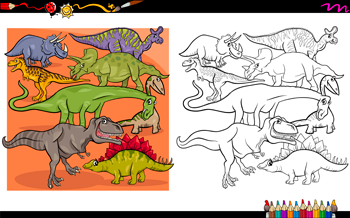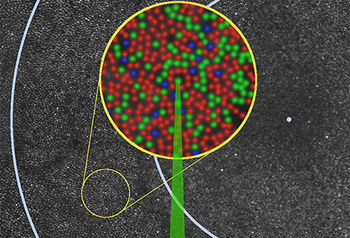Surprise! Most ‘color vision’ cells see only black or white
Many cells thought to sense color in fact read only whether something is white or not

Color vision may work a bit like filling in colors in a black-and-white coloring book, new research finds.
shironosov / istockphoto
The way people see color may be a bit like coloring in a black-and-white coloring book, a new study finds. The discovery means color vision may work very differently than scientists had thought.
The eyes see using many different types of cells. Each kind collects different information. Scientists have known for decades that some cells — known as cones — detect color. They are part of the retina inside the back of the eye.
Cone cells can sense red, green or blue light. But Ramkumar Sabesan discovered that some of them sense white light — and only white light. That was a big surprise.

Sabesan is a vision researcher at the University of Washington in Seattle. He and his colleagues at the University of California, Berkeley reported their unexpected finding September 14 in the journal Science Advances.
The team used a powerful microscope in their lab to peer into the eyes of two men. They created a map of about 1,000 cone cells in the retina. This map showed where the red, green and blue cones are. Then the scientists shone tiny spots of laser light onto individual red or green cone cells and asked the men what color they saw.
The so-called red and green cone cells each come in two types, they learned. One type transmitted white light. The other type relayed color. Especially surprising, far more cones reported seeing white light than either red or green. Out of 167 red cones tested, 119 signaled white; just 48 saw red. Out of 98 green cones tested, 77 reported white light and a mere 21 signaled green. There are very few blue cones in the retina. The researchers didn’t test those.
It is surprising that so few cones seem to detect color, even though all of them are able to, says Donald MacLeod. “It’s a rather inefficient arrangement,” says this vision researcher at the University of California, San Diego.
The large number of cells that detect white (and black, which is the absence of white) create a sharp black-and-white picture of someone’s surroundings. They provide crisp edges of visual details. The red- and green-signaling cells fill in the lines with blurrier chunks of color. The process works much like filling in a coloring book or adding color to a black-and-white film, says Sabesan.
The research is impressively difficult, notes Jay Neitz. He also is a vision scientist at the University of Washington in Seattle, but did not work with this team. He compares what they did to getting the first people to the moon. “It is a super technological achievement,” he says — “an amazing thing.
How they did it
To get a clear map of the retina, the researchers borrowed techniques that astronomers use to map things in space. Because the eye is constantly jiggling, the researchers also had to study patterns of the men’s eye movements. Only that way could they predict exactly where each cone cell would be a split second later when they targeted it with the laser beam.
In all, they stimulated 273 individual cone cells, one by one, in the volunteers’ eyes. The process took them about two years.

The findings suggest that the retina is doing more than scientists had thought. Cone cells were thought to read only red, green or blue colors. Scientists thought the brain did the hard work of combining those signals into a full-color view of the world (including black and white).
But instead, “the retina is doing more of the work,” says Neitz. The retina sends both black and white and color data to the brain. This makes the brain’s job easier. The researchers are now trying to understand how cone cells know whether to signal a color or the presence of white. How the different cell types are organized in the retina seems to be important in that decision. For example, red cones were more likely to signal white when they had been surrounded by green cones.
These findings could be good news for people with color blindness. If the right cones can be added to the retina, Neitz says, the human brain should easily be able to fill in one more color to its black-and-white picture.







